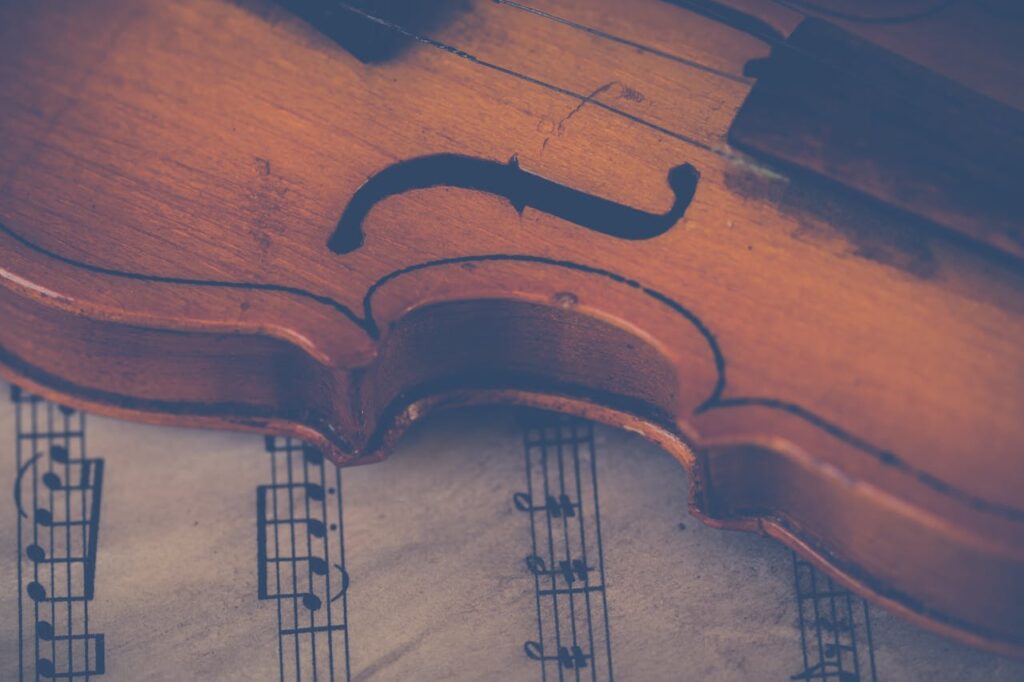
Explore & Play
Discover interesting topics and solve the accompanying crossword puzzle.
Musical Instrument Crossword | Instruments from around the world
Discover our musical instrument crossword and explore a world of unique sounds. This engaging puzzle is paired with an article that delves into instruments from various cultures and time periods.
Table of Contents
Before diving into the article, feel free to start with the Musical instrument crossword to test your knowledge and have some fun! If you’re not very familiar with this topic, you can read the article first to gain some insights and then return to the crossword to challenge yourself. Enjoy exploring the fascinating world of musical instruments!
Musical Instrument Crossword
You can either fill in the crossword puzzle directly on this page or click the button in the bottom right corner to print it for free.

A Journey Through Global Music: Unique Instruments from Around the World
Music has been a universal language across all cultures, with each region contributing unique instruments that shape its soundscape. In this journey through global music, we’ll explore an array of traditional instruments, each carrying rich histories and cultural significance. From string instruments to percussion, wind to ancient tools, these instruments tell stories that transcend generations. And if you’re up for a challenge, test your knowledge with our musical instrument crossword at the end!
Strings Across the Continents
String instruments have formed the backbone of many musical traditions, from delicate lutes to bold fiddles. Each is designed to resonate with the soul of its culture, adding depth and texture to folk and classical sounds around the globe.Oud: The Middle Eastern Lute
Known as one of the oldest stringed instruments, the oud is central to Arabic music. This pear-shaped lute has a short neck and lacks frets, allowing musicians to produce smooth, bending tones. With roots dating back over 5,000 years, the oud has been cherished for its versatility and depth of expression in Middle Eastern and North African music.Kora: The Storyteller’s Harp from West Africa
The kora is a harp-lute hybrid with 21 strings, producing a calming, melodic sound. Traditionally, it is played by griots—West African storytellers who pass down oral histories. The kora’s resonant sound and deep history make it central to the cultural fabric of countries like Mali and Senegal.Sarangi: The Voice of Indian Classical Music
The sarangi is an expressive, bowed instrument that resembles the human voice. Its sounds are known to evoke emotion, making it an ideal accompaniment for vocal music in India. Despite its difficulty to play, the sarangi has become a staple in North Indian classical music.Erhu: China’s Two-Stringed Wonder
Often referred to as the “Chinese violin,” the erhu is a two-stringed instrument that produces a rich, melancholic sound. Its tones are often heard in Chinese operas and folk music, where it adds an emotional layer to performances. The erhu’s simplicity in structure belies its complexity in sound.Koto: Japan’s Plucked Zither
The koto is a long, elegant instrument with 13 strings and moveable bridges, traditionally used in Japanese court music. Plucking the koto’s strings creates a soft, flowing sound that resonates with the spirit of Japan’s serene landscapes.Percussion’s Heartbeat – Rhythms of the World
Percussion instruments are often at the core of traditional music, setting rhythms that drive dances, ceremonies, and communal gatherings. These instruments provide the heartbeat, uniting people through shared rhythms.Djembe: West Africa’s Drumming Circle Staple
The djembe is a goblet-shaped drum played with bare hands. Its wide tonal range makes it versatile for both low, bass-like sounds and higher, cutting tones. Originating in West Africa, it’s commonly used in drumming circles, where its beats bring people together.Taiko: Japan’s Powerful Festival Drum
Taiko refers to a family of Japanese drums known for their powerful sound. The intense rhythms are often seen in Japanese festivals, ceremonies, and theater. Playing taiko requires both physical endurance and rhythm, creating an immersive experience for both players and listeners.Bodhrán: The Irish Frame Drum
The bodhrán is a handheld frame drum played with a beater, producing a deep, resonant sound. Central to Irish folk music, the bodhrán adds texture and rhythm, accompanying traditional jigs and reels with its steady, rhythmic pulse.Tabla: India’s Rhythmic Companion
The tabla consists of two hand-played drums with distinct pitches. Known for its complex rhythms, it accompanies classical Indian music and has found a place in contemporary genres as well. The tabla’s versatility makes it an essential part of many Indian musical traditions.Cajón: Peru’s Box Drum
Originating from the Afro-Peruvian community, the cajón is a wooden box drum that players sit on and tap to create different tones. Known for its sharp, percussive sound, the cajón is now widely used in Latin and flamenco music.Wind Instruments: Melodies of Air and Breath
Wind instruments, from haunting flutes to bold horns, bring melody and harmony to the traditional sounds of many cultures. They often mimic the sounds of nature, symbolizing a connection between humans and the environment.Didgeridoo: Australia’s Connection to Nature
The didgeridoo is an ancient instrument of the Aboriginal people of Australia. Made from hollowed-out wood, it produces a low, droning sound that can last continuously through circular breathing. The didgeridoo’s sound is often said to reflect the earth and the natural world.Shakuhachi: Japan’s Meditative Bamboo Flute
The shakuhachi is a bamboo flute traditionally played by Japanese monks in meditation. Its breathy tones carry a sense of tranquility, allowing players to create both soft, whispering sounds and sharp, piercing notes.Duduk: Armenia’s Soulful Reed
Made from apricot wood, the duduk has a warm, mournful tone that expresses deep emotion. Known as the national instrument of Armenia, the duduk’s unique sound adds richness to Armenian folk and classical music.Siku: Andean Panpipes
The siku is a traditional Andean panpipe made of bamboo reeds. Played in the mountainous regions of South America, its sound reflects the rugged beauty of the Andes, creating harmonies that resonate through Andean festivals.Sheng: China’s Mouth-Blown Organ
One of the oldest Chinese wind instruments, the sheng is a mouth-blown instrument with multiple pipes, resembling a small organ. Its warm, harmonic sound is a vital part of Chinese classical music, adding layers to orchestral pieces.Plucked and Bowed Wonders: More Stringed Instruments
Stringed instruments bring a distinct melodic presence to traditional music, adding layers of harmony and creating connections through both plucking and bowing.Balalaika: Russia’s Triangular Icon
The balalaika is a triangular, three-stringed instrument essential to Russian folk music. Its bright, lively sound brings a danceable energy to traditional Russian tunes.Sitar: India’s Mesmerizing Lute
The sitar is a complex instrument with multiple strings and frets, creating a layered, resonant sound. Famous worldwide, the sitar has influenced both Indian classical music and Western music through artists like Ravi Shankar.Mandolin: Italy’s Lute-Like Melody Maker
Known for its lute-like shape, the mandolin brings a crisp sound to Italian folk music, adding charm to both traditional and modern melodies.Morin Khuur: Mongolia’s Horse-Headed Fiddle
The morin khuur, or “horse-head fiddle,” is a two-stringed instrument integral to Mongolian music. It produces a deep, resonant sound, often used to mimic the calls of animals, symbolizing Mongolia’s vast steppes.Tar: Persia’s Bowl-Backed Beauty
The tar is a double-bowl-shaped lute that is central to Persian classical music. Its intricate melodies have been part of Persian culture for centuries, embodying the soul of the region’s rich musical heritage.Distinctive Sounds of the East: Uncommon Instruments of Asia
Asia offers a wealth of unique instruments that produce extraordinary sounds, adding a distinct texture to its music.Guzheng: China’s Ancient Zither
The guzheng is similar to the koto and is plucked to create cascading, resonant sounds. Known for its expressive melodies, the guzheng is often used in Chinese classical music to reflect themes of nature and peace.Dan Bau: Vietnam’s One-Stringed Wonder
The dan bau is a Vietnamese monochord that produces bending, ethereal tones. Played with one hand, it’s known for its distinctive, emotive sound, used to reflect themes of longing and nostalgia in Vietnamese music.Kalimba: Africa’s Thumb Piano
The kalimba, or thumb piano, is a small instrument with metal tines, creating soft, bell-like tones. Its simplicity makes it a popular instrument in African storytelling and ceremonies.Kalangu: West Africa’s Talking Drum
The kalangu is known as a “talking drum” due to its ability to change pitch. Musicians can “speak” with the drum by squeezing its strings, creating rhythmic phrases that communicate messages in West African communities.Echoes of History: Ancient Instruments Still Played Today
While some instruments have remained almost unchanged over centuries, their sounds continue to captivate modern listeners.Lyre: Greece’s Ancient String Instrument
The lyre was central to ancient Greek poetry and storytelling. This small, harp-like instrument has become a symbol of Greek antiquity, with sounds that echo the myths and legends of old.Bagpipe: Scotland’s Iconic Instrument
The bagpipe is known for its distinct, piercing sound, which has become synonymous with Scottish culture. Originally used in the military, it’s now a centerpiece of Scottish festivals and events.Alphorn: Switzerland’s Alpine Horn
Traditionally played in the Alps, the alphorn was used by Swiss herdsmen to communicate across mountains. Its long, hollow body creates a deep sound that resonates in the open air, symbolizing Swiss heritage.Ney: The Middle East’s Ancient Flute
The ney is a soft, airy flute that dates back to ancient Egypt and is still widely played in Middle Eastern music. Its mellow sound is deeply connected to the spiritual traditions of the region.A World of Music Awaits
From the oud’s resonant notes to the alphorn’s booming sound, traditional instruments bring rich, cultural layers to the world of music. Now that you’ve explored these fascinating instruments, why not test your knowledge with our crossword? Discover how well you remember each instrument’s unique qualities and see if you can complete the puzzle!Share to...
Thank you for reading 👋
I hope you enjoy the content.
I hope you enjoy the content.
Want to receive our daily crossword puzzle or article? Subscribe!
You may also be interested in
Share to…
Want to receive our daily crossword puzzle?
-
Jigsaw Puzzles
Blue-Eyed Kitten Puzzle Delight 250 | 300 | 500 Pieces
kr 348,00 – kr 439,00 Select options This product has multiple variants. The options may be chosen on the product page -
Jigsaw Puzzles
Whimsical Garden Cat Jigsaw Puzzle 250 | 300 | 500 Pieces
kr 348,00 – kr 439,00 Select options This product has multiple variants. The options may be chosen on the product page -
Jigsaw Puzzles
Cat & Sunset Wooden Jigsaw Puzzle 250 | 300 | 500 Pieces
kr 348,00 – kr 439,00 Select options This product has multiple variants. The options may be chosen on the product page

















